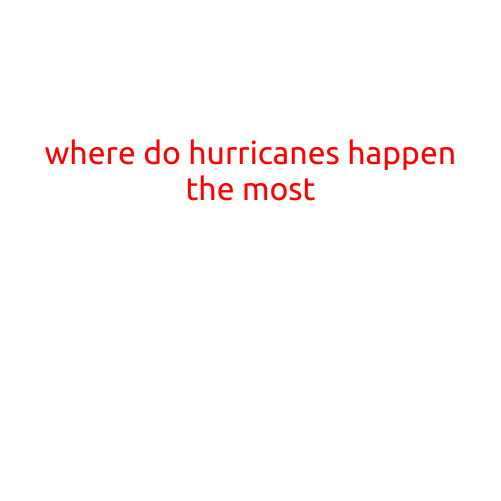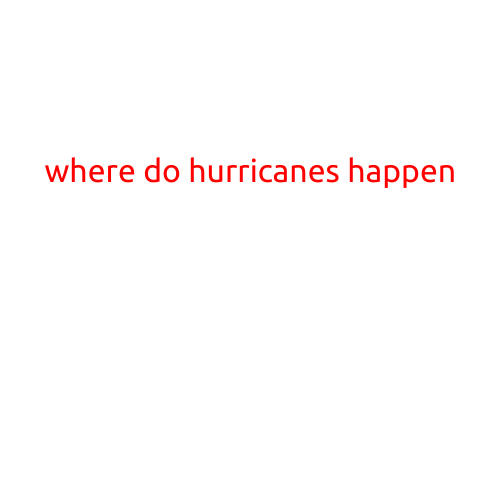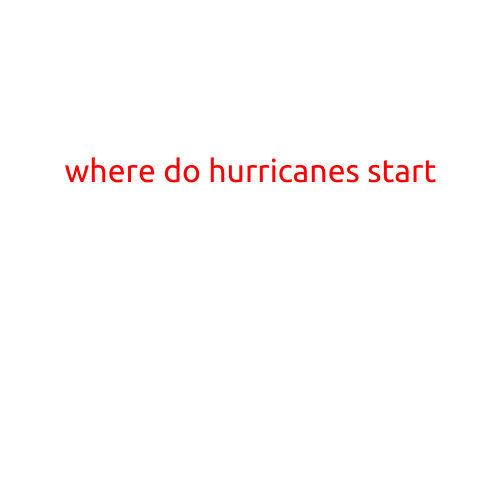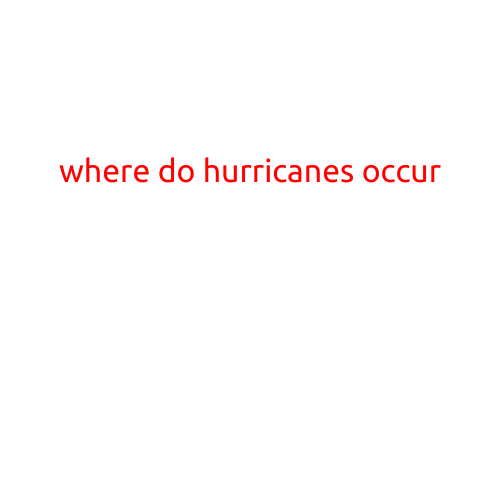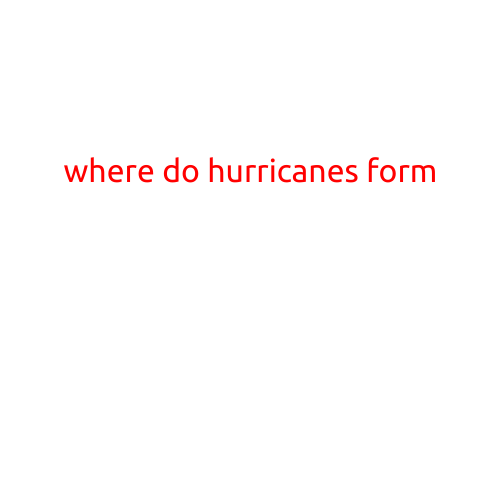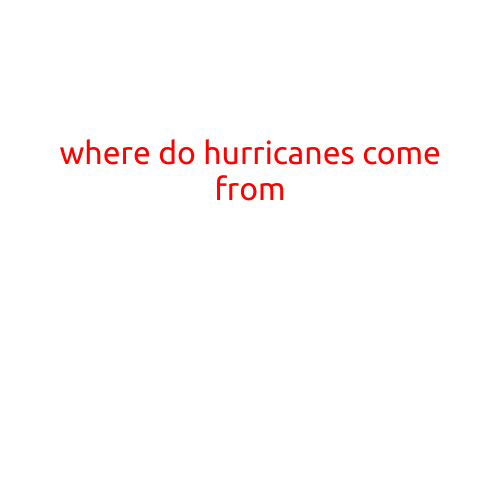
Where Do Hurricanes Come From?
Hurricanes, also known as typhoons or cyclones, are powerful tropical storms that can cause widespread destruction and loss of life. But have you ever wondered where these natural disasters come from? Let’s dive into the world of meteorology and explore the origins of these intense weather systems.
The Formation Process
Hurricanes are formed over warm ocean waters in the tropics and subtropics. The ideal conditions for hurricane formation are:
- Warm ocean waters: Temperatures should be at least 26.5°C (80°F) to a depth of about 50 meters (165 feet).
- Moisture-rich atmosphere: High levels of atmospheric moisture are necessary to fuel the storm’s growth.
- Low atmospheric pressure: A region of low pressure acts as a catalyst for convection, allowing the storm to develop.
- Weak wind shear: Low wind shear, which is a change in wind direction and speed with height, allows the storm to strengthen and maintain its shape.
When these conditions are met, the following process occurs:
- Convection begins: Warm ocean waters evaporate moisture into the air, creating convection currents that rise into the atmosphere.
- Clouds form: As the moist air rises, it cools, and the water vapor condenses into clouds.
- Rotation develops: As the air rises, it begins to rotate due to the Coriolis effect, a phenomenon caused by the Earth’s rotation.
- Eye forms: A calm, cloud-free center, known as the “eye,” develops as the storm’s circulation strengthens.
- Strengthening and intensification: The storm’s circulation becomes more organized, leading to an increase in wind speed and precipitation.
Characteristics of Hurricanes
Hurricanes have several distinct characteristics that define them:
- Wind speed: Hurricanes have sustained wind speeds of at least 119 km/h (74 mph) and gusts of up to 250 km/h (155 mph).
- Eye of the storm: The calm, cloud-free center of the hurricane, which can be up to 40 km (25 miles) in diameter.
- Rainfall: Hurricanes can bring heavy rainfall, leading to flash flooding and landslides.
- Storm surge: A rise in sea level caused by the storm’s winds and low atmospheric pressure, which can lead to coastal flooding and erosion.
Where Do Hurricanes Typically Occur?
Hurricanes can form in various parts of the world, including:
- Atlantic Ocean: The Atlantic hurricane season, which runs from June 1 to November 30, affects the eastern seaboard of the United States, the Caribbean, and Central America.
- Pacific Ocean: The Pacific hurricane season, which runs from May 15 to November 30, affects the western coast of North America, Hawaii, and parts of Central America.
- Indian Ocean: The North Indian Ocean cyclone season, which runs from April to December, affects India, Bangladesh, and other parts of Southeast Asia.
- South Pacific: The South Pacific cyclone season, which runs from November to April, affects islands in the Pacific, such as Vanuatu and Fiji.
In conclusion, hurricanes are formed over warm ocean waters in the tropics and subtropics, fueled by atmospheric moisture and convection. Understanding the characteristics and formation process of these powerful storms can help us better prepare for and respond to their devastating impacts.
